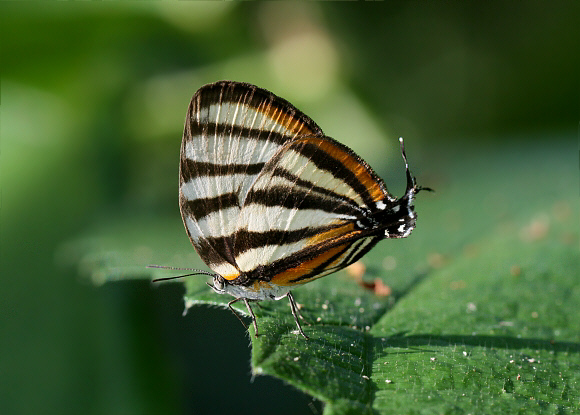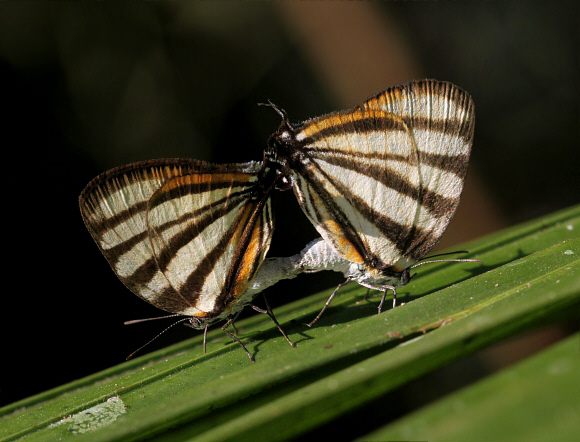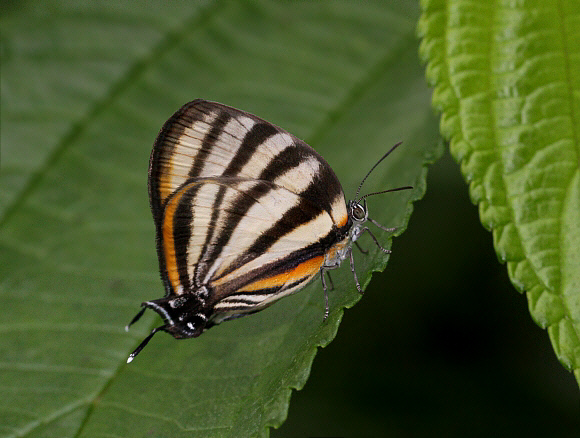
Introduction
Almost all neotropical Theclinae species are placed in the Eumaeini. The tribe is not particularly well represented in collections, so until fairly recently a high percentage remained unstudied, and were inappropriately filed away in the ‘convenience’ genus Thecla. Many taxonomists have attempted to rationalise the systematics of the Eumaeini, the most recent being Robbins who published a revision in 2004, reclassifying the taxa into 83 genera. Currently there are 1058 known species. Taking into account their small size, secretive behaviour, and the great similarities between many species, it is estimated that about another 200 species probably remain to be discovered.
There are 18 species of Arawacus, all confined to the neotropical region. All have a similar pattern of brown or black stripes radiating from the tornus of the hindwing and terminating at points along the forewing costa. In some species the stripes are narrow and well defined, while in others such as separata they are broad and suffused.
The pattern serves to divert the eye of birds away from the butterfly’s head and body, and towards the “false antennae” tails. Immediately after settling the butterfly characteristically gyrates to face in the opposite direction and dips its head. It then slowly oscillates the hindwings, causing the tails to wiggle, which further acts to focus the observer’s attention on the rear of the butterfly.
The appearance and behaviour described above creates a “back to front” illusion that tricks birds into aiming at the wrong part of the butterfly. Birds typically try to increase their chances of a direct hit by aiming their attack just ahead of where they expect the butterfly to fly, but are fooled into aiming behind, instead of in front of the target. The likely result is that the butterfly is able to make its escape in the opposite direction.
Arawacus separata is distributed from Ecuador to Paraguay. It is replaced in Central America and northern South America by an almost identical species Arawacus aetolus.

Habitats
This species is commonly found along roadsides, streams and other forest edge habitats at altitudes between 0-1200m.
Lifecycle
To be completed.
Adult behaviour
One of the delights of studying neotropical butterflies as opposed to those from other regions of the world, is that many species have fascinating behaviours. Cithaerias Phantoms for example seem to deliberately taunt the observer, luring him away from the safety of the trails and ever deeper into the undergrowth until the hapless chap gets caught up in a tangle of prickly branches, at which time the butterfly decides to return to the path where it was originally seen !
Arawacus separata is another teaser – it sits motionless on a leaf, sideways-on to the observer until such time as he lifts his camera to the eye. It then plays a little game, rotating on its axis to present the forlorn photographer with a view of its posterior ! Although this no doubt evolved as a defence to confuse birds, the observer can’t help feeling that he is being deliberately taunted!

